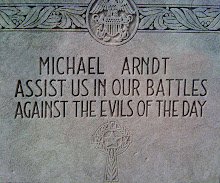Posted by: Michael Arndt on August 03, 2009
This is a guest blog by Venessa Wong, who joined BusinessWeek’s Innovation+Design team in June.
Here’s the problem in trying to get a group of hybrid thinkers together: standard industry events for designers, business execs, and other professionals don’t cater to them. The solution? Create a conference that is as tricky to categorize as the people who attend it. On July 24-26, a diverse group of 50 people gathered, by invitation only, for an under-the-radar event called the Overlap Conference in Monterey, Calif.
I spoke with attendee Michael Anton Dila, partner at Toronto-based design consultancy Torch Partnership, to learn what went on at the clandestine affair.

The “unconference,” as attendees call it, started in 2006 and is a part-professional, part-recreational retreat for “people who believe that interesting things happen at the edges and intersections between disciplines, and that these overlaps are at the core of innovation,” according to group’s bare-bones Web site, theoverlap.org/2009. It is explicitly not for pure networking.
This year’s motley bunch included an assorted portfolio of designers; businesspeople, investors and MBA graduates; a tech systems architect who was also a former Navy Seal; and a tai chi master. The mean age was in the high 30s, with several people over 60 and a few in their mid-20s. “Despite coming from different backgrounds, we’re all risk takers We don’t fit in normal places so we make positions for ourselves,” says Dila, 45, who also has a PhD in philosophy.
You must know someone in the so-called club to get invited—conference organizers change annually and the event is not promoted. Planners capped attendance at 50 people and there is no intent to let in more. The fee: $850.
Days started around 8 a.m. and ended at 6 p.m. Attendees broke into teams and dove into exercises revolving around a theme of 3 P's: practice, prototyping, and play. One challenge—redesigning the evening news—led to a round of "bodystorming," in which teams acted out ways people might consume the news in the future. One team chose to personify news on the iPhone. Other exercises required traditional sketching with papers or computers. To break personal walls, volunteers gathered around a fireplace to share true, private tales. “It involves personal risk,” says Dila.
The lesson from the conference? For Dila, it was the value of designing something that permits others to participate and is never really finished. In the real world, this can mean things from open platforms and software to products and services where the consumer is always involved in improving and evolving the design.
“This is precisely where innovation comes from, being sideways and joining things that don’t conventionally belong together or crossing wires and getting a different kind of fire going,” he says.


No comments:
Post a Comment